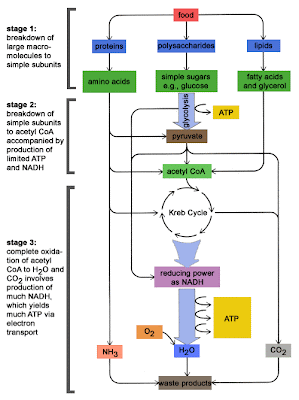Hockey players are well aware of the fact that it is a very energy demanding sport. During a hockey match players can run approximately 7km, depending on their playing position. Furthermore the duration is approximately 70 minutes and a half time of approximately 5 minutes. Hockey is recurrent in nature and players must perform continuously for the duration of the match. As you can just imagine (or those who knows) from the above mentioned info, the fact is that hockey takes allot out of you.
A very high demand is placed on the aerobic systems of the players and thus aerobic endurance is vital to hockey players’ performances. The energy demands of hockey players are mainly met by aerobic respiration due to the prolonged duration of matches. In the case of high intensity exercises such as sprint exercises (<10sec), energy will be obtained by anaerobic respiration.
Our body can be compared to that of a car, just as a car needs fuel to generate ‘’energy’’ to produce momentum, so does our body and specifically our muscles need fuel. Now immediately we think FOOOOOOD, yes food, but the form of fuel that the muscles use is very refined and is called Adenosine TriPhosphate(ATP). The production of ATP in the muscle cells is formed by using one or a combination of three metabolic pathways:
1. ATP-PC System
2. Glycolysis
3. Oxidative phosphorylation
1. ATP-PC System
ATPase (enzyme) breaks down ATP; to produce ’’E’’ (energy).
ATP ----------> ATPase ----------> ADP+ P + ’’E’’
Short-term, high intensity exercises ( <10sec)
- Rapid Supply of ATP
2. Glycolysis
Second metabolic pathway capable of producing ATP rapidly without O2
The breakdown of 1 Glucose molecule forms 2 molecules of Pyruvate OR Lactate and 2 ATP
- If O2 is absent ----------> Lactate forms
- If O2 is present ----------> Pyruvate forms and enter the oxidative phosphorylation system and ATP production is aerobic, as is the case with HOCKEY.
- Oxidative Phosphorylation (aerobic)
3. Oxidative Phosphorylation
Consists of 3 Stages: (Simple explanation)
Stage 1:
Pyruvate, produced by glycolysis which is regarded as the 1st step of aerobic respiration, is converted to Acetyl-CoA (Acetyl Co-Enzyme A)
[REMEMBER 2 Pyruvate molecules are produced by glycolysis thus 2 Acetyl-CoA are formed by the conversion of pyruvate]
Stage 2:
Acetyl-CoA now enters the Krebs Cycle which, via a cycle of complex reactions then produces:
- 3 molecules NADH
- 1 molecule FADH
Stage 3:
Also known as Electron transport chain/Respiratory Chain.
In this stage NADH and FADH are used to rephosphorylate ADP to form ATP.
[In the end a grand total of 32 ATP molecules are produced aerobically from 1 molecule glucose].Although we only considered glucose now; Protein and fats can also be broken down to form Acetyl-CoA that enter the Krebs cycle to produce ATP.
Figure 1. Bioenergetic Pathways
Figure 1. Bioenergetic Pathways
This may seem like a lot of irrelevant info that you may not appreciate right now, BUT by understanding the energy systems, it supports and encourages the way in which we develop specific programs to meet specific sports’ energy demands. The purpose of my blog posts will thus be to assist coaches and players in conditioning aspects to meet the demands of hockey. These hockey specific training regimes will aim to help improve fitness levels, skills and the performances of individuals and teams.
References:
Boyle PM, Mahoney CA, Wallace WF. The competitive demands of elite male field hockey. J Sports Med Phys Fitness. 1994 Sep;34(3):235-41
Gabbett, Tim J. GPS Analysis of Elite Women's Field Hockey Training and Competition. Journal of Strength & Conditioning Research: 2010 May; 24(5): 1321-1324.
Reilly T, Borrie A. Physiology applied to field hockey. Sports Med. 1992 Jul;14(1):10-26
Spencer M, Lawrence S, Rechichi C, Bishop D, Dawson B, Goodman C. Time-motion analysis of elite field hockey, with special reference to repeated-sprint activity. J Sports Sci. 2004 Sep;22(9):843-50
BLOG BY: Elzanne Jacobs (Bachelor of Sport Science)


Does creatine supplements play a role in this cycle or how does it work?
ReplyDelete